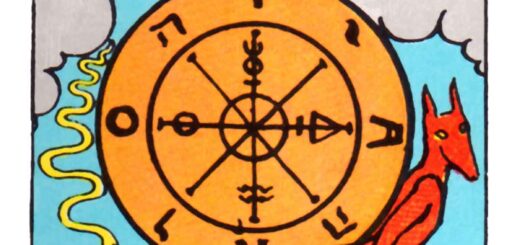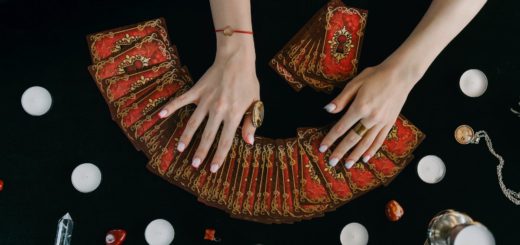Free Tarot Reading 101: A Comprehensive Guide on Everything Tarot

Hey there, amazing readers! 🖐️ Just a quick note: yes, we know there are a lot of ads here. Trust us, we get it—it’s not the prettiest look, but they help us keep this blog alive and kicking. Those pesky little ads cover the costs of all the behind-the-scenes magic, from hosting and tech stuff to creating content we hope you’ll love.
We’re committed to delivering quality posts, and your support (even just sticking around despite the ads) means everything to us. So, bear with us, and thanks for helping us keep the good vibes rolling. Now, on to the fun stuff! 😉
TRANSLATE BUTTON AT THE END OF THE ARTICLE
Overview: Free Tarot Reading 101: A Comprehensive Guide on Everything Tarot
Tarot reading is an ancient practice that has captivated individuals seeking guidance, insight, and self-discovery for centuries.
The process involves the interpretation of a deck of tarot cards, each with its own unique symbolism and meaning.
This comprehensive guide aims to provide beginners with a solid foundation in the world of tarot, covering topics such as the basics of tarot, its history and origins, choosing the right tarot deck, understanding card meanings, conducting a tarot reading, and exploring different tarot spreads.
Whether you’re a skeptic or a believer, this guide will equip you with the knowledge and tools to embark on your own tarot journey.
1. Introduction: Understanding the Basics of Tarot
Before delving into the intricate world of tarot, it’s essential to grasp the basics of this ancient divination practice.
Tarot is a deck of 78 cards, divided into the Major Arcana (22 cards representing significant life events and archetypes) and the Minor Arcana (56 cards symbolizing everyday experiences and situations).
These cards are not mere fortune-telling tools but rather serve as a mirror to reflect the subconscious mind and provide guidance.
Tarot readings involve drawing cards from the deck and interpreting their meanings within specific contexts or spreads.
The interpretation relies on the symbolism and imagery depicted on each card, combined with the reader’s intuition.
Tarot readings offer insight into various aspects of life, including love, career, relationships, and personal growth.
2. History and Origins of Tarot: A Brief Overview
The history of tarot can be traced back to the 15th century when playing cards were introduced in Europe.
Tarot decks, as we know them today, were initially used for gaming purposes but eventually gained popularity as tools for divination and self-reflection.
The exact origins of tarot remain a subject of debate, with theories ranging from ancient Egypt to medieval Europe.
One of the earliest known tarot decks is the Visconti-Sforza Tarot, created in the 15th century in Italy.
Over time, different cultures and regions developed their own unique tarot decks, each with its distinct symbolism and art styles.
Notable tarot decks include the Rider-Waite Tarot, the Thoth Tarot, and the Marseille Tarot.
3. Essential Tarot Deck: Choosing the Right Cards for You
Selecting the right tarot deck is crucial, as it plays a significant role in establishing a connection between the reader and the cards.
With countless options available, it’s essential to choose a deck that resonates with your intuition and personal preferences.
The most popular and widely-used tarot deck is the Rider-Waite Tarot, known for its rich symbolism and detailed illustrations.
When choosing a tarot deck, consider factors such as the artwork style, imagery, and the system of interpretation.
Some decks follow the traditional Rider-Waite structure, while others offer unique perspectives and interpretations.
Browse through different decks, read reviews, and trust your instincts to find the deck that speaks to you on a deeper level.
4. Tarot Card Meanings: Decoding the Symbolism
Understanding the meanings behind tarot cards is essential for effective readings.
Each card in the tarot deck holds its distinct symbolism and interpretation.
The Major Arcana cards represent significant life events and archetypal energies, while the Minor Arcana cards reflect everyday experiences and situations.
To interpret tarot cards accurately, beginners can rely on various resources, such as tarot guidebooks, online resources, and personal intuition.
Start by familiarizing yourself with the meanings of each card and then explore how they interact with each other in different spreads.
Over time, as you deepen your understanding of the cards, you’ll develop a more intuitive and personalized approach to interpreting their meanings.
5. Conducting a Tarot Reading: Step-by-Step Instructions
Once you have chosen your tarot deck and familiarized yourself with the card meanings, you’re ready to conduct a tarot reading.
Here’s a step-by-step guide to help you get started:
Create a sacred space: Find a quiet and comfortable place where you can focus your energy and intentions.
Shuffle the cards: Clear your mind and shuffle the deck while focusing on the question or topic you want guidance on.
Select a spread: Choose a tarot spread that aligns with your question or area of focus.
Common spreads include the Celtic Cross, Three-Card Spread, and Relationship Spread.
Lay out the cards: Place the cards in the chosen spread pattern, face down, and then flip them one by one, starting from the first position.
Interpret the cards: Analyze the symbolism and meanings of each card in relation to its position in the spread.
Consider the card’s upright or reversed position, as it can alter the interpretation.
Reflect and integrate: Take time to reflect on the insights gained from the reading and consider how they can be applied to your situation.
Trust your intuition and let the messages of the cards guide you.
6. Common Tarot Spreads: Exploring Different Layouts and Interpretations
Tarot spreads are specific patterns in which the cards are laid out during a reading.
Different spreads serve different purposes, providing a framework for interpreting the cards’ meanings in relation to each other.
Here are a few common tarot spreads:
Celtic Cross Spread: This is one of the most widely used spreads, providing a comprehensive view of a situation.
It consists of ten cards, each representing different aspects of the question or situation at hand.
Three-Card Spread: Simple yet versatile, this spread involves drawing three cards.
The first card represents the past, the second card signifies the present, and the third card indicates the future or potential outcomes.
Relationship Spread: Designed for matters of the heart, this spread focuses on understanding the dynamics and potential outcomes of a romantic relationship.
It typically involves six to eight cards, each representing different aspects of the relationship.
One-Card Daily Guidance: Ideal for daily introspection and guidance, this simple spread involves drawing a single card to gain insights and reflections for the day ahead.
Remember, while spreads provide a structure, trust your intuition and adapt the interpretation to suit your unique situation.
Conclusion
Tarot reading is a fascinating and powerful tool for self-reflection, guidance, and personal growth.
By understanding the basics of tarot, exploring its history, choosing the right deck, decoding card meanings, and practicing different spreads, you can embark on a transformative journey of self-discovery.
Remember, tarot is a deeply personal and intuitive practice, so allow your intuition to guide you as you explore the intricate symbolism and meanings of the cards.
With time and practice, you’ll unlock the wisdom and insights that tarot has to offer, enabling you to navigate life’s challenges with clarity and confidence.

The Enlightenment Journey is a remarkable collection of writings authored by a distinguished group of experts in the fields of spirituality, new age, and esoteric knowledge.
This anthology features a diverse assembly of well-experienced authors who bring their profound insights and credible perspectives to the forefront.
Each contributor possesses a wealth of knowledge and wisdom, making them authorities in their respective domains.
Together, they offer readers a transformative journey into the realms of spiritual growth, self-discovery, and esoteric enlightenment.
The Enlightenment Journey is a testament to the collective expertise of these luminaries, providing readers with a rich tapestry of ideas and information to illuminate their spiritual path.
Our Diverse Expertise 🌟
While our primary focus is on spirituality and esotericism, we are equally passionate about exploring a wide range of other topics and niches 🌍📚. Our experienced team is dedicated to delivering high-quality, informative content across various subjects ✨.
To ensure we provide the most accurate and valuable insights, we collaborate with trusted experts in their respective domains 🧑🏫👩🏫. This allows us to offer well-rounded perspectives and knowledge to our readers.
Our blog originally focused on spirituality and metaphysics, but we’ve since expanded to cover a wide range of niches. Don’t worry—we continue to publish a lot of articles on spirituality! Frequently visit our blog to explore our diverse content and stay tuned for more insightful reads.




















